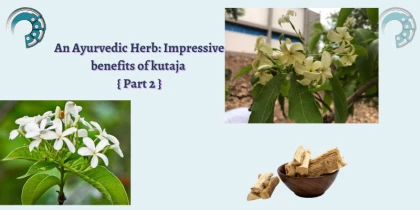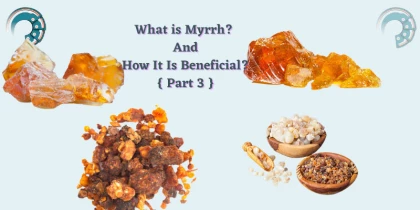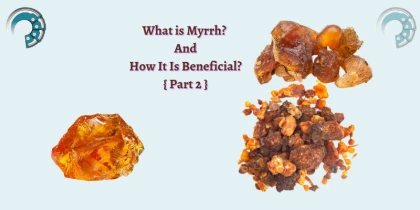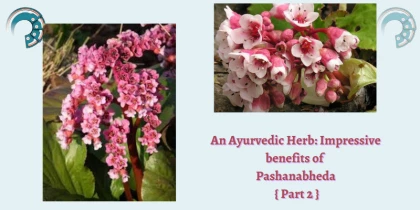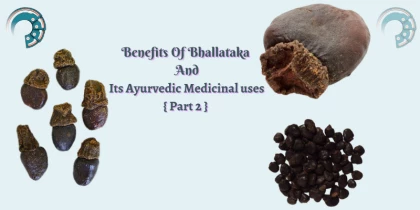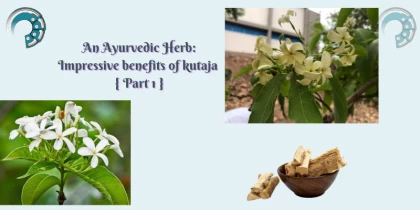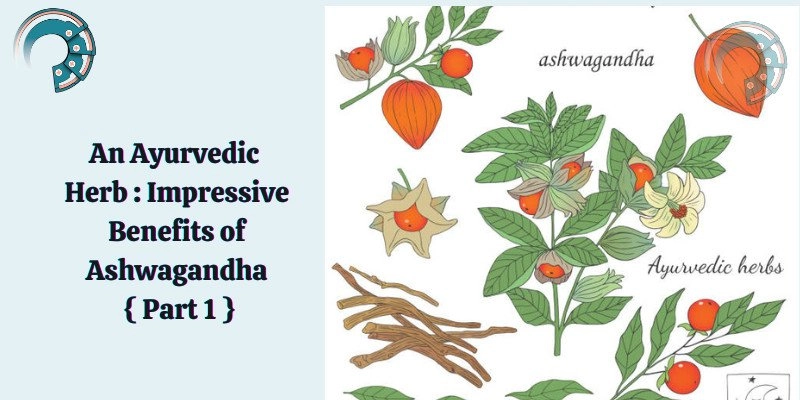
An Ayurvedic Herb : Impressive Benefits of Ashwagandha { Part 1 }
What Is Ashwagandha?
Ashwagandha is part of a class of plants called adaptogens known for their health benefits when ingested as teas, powders, tinctures, and supplements, or in their raw forms. Also known as Indian ginseng, winter cherry, or by its scientific name Withania somnifera, ashwagandha is a herbal shrub whose roots and berries are used for their medicinal properties.
Withania somnifera is a plant from the nightshade family native to the Indian subcontinent. It's more commonly known as ashwagandha, Indian ginseng, or winter cherry (not to be confused with Physalis alkekengi).
It is a fairly small shrub with small pale green flowers, simple leaves, and red berries. It has a tuberous root, carrot, or ginger shaped. It also has a distinct smell, described as horse-like, which is where it gets its name, ashwagandha; Ashwa is Sanskrit for horse and gandha for the smell. As one of its qualities is that it's strengthening, it's also said to impart the strength of the stallion.
How to Take Ashwagandha :
Ashwagandha roots and berries can be consumed for their medical properties, but typically, you find ashwagandha in supplement capsules or in tablet, powder, tincture, and tea form.
Emily Clairmont, a registered dietitian at the University of Vermont Medical Center in Burlington, Vermont, recommends starting with an ashwagandha tea as a way to introduce the herb into your diet gently and contribute to your hydration as well—a crucial factor to overall health.
If you want to get more creative, add the raw form of ashwagandha or an ashwagandha powder directly to your food. For example, you can mix the powder into nut butters, granola, smoothies, or overnight oats. Just don’t expose it to high heat, Clairmont says, which would cancel out the herb’s therapeutic benefits and possibly even render it carcinogenic. Instead, keep it over medium heat or toss it into your food toward the end of your food preparation.
Benefits Of The Various Parts Of The Plant:
Leaves:
The analgesic and antioxidant properties of the leaves of ashwagandha are used for treating a viral infections, cough and cold symptoms, fever, and chronic pain.
Flowers and Seeds:
Ashwagandha flowers have potent diuretic and aphrodisiac properties which is used for improving fertility and treating kidney problems such as kidney stones.
The seeds, on the other hand, have anthelminthic properties and are used for preventing and treating infectious diseases and parasitic invasions.
Roots:
The roots are the most crucial part of the plant and are mostly used in various formulations. The root has potent aphrodisiac, diuretic, anti-helminthic, antioxidant, anti-depressant, and anti-diabetic properties and are hence used for treating neural problems, diabetes, constipation, infertility, skin disorders, etc.
Although, in ancient times, ayurvedic healers used to self-prepare ashwagandha formulations, nowadays, the markets are flooded with these formulations and one can easily avail it and use it for its wide range of health benefits.
Benefits of Ashwagandha :
Most of the benefits from ashwagandha are from the root and the leaves. The leaves are most commonly used in teas. The root can be taken in many ways but it's most commonly dried, powdered, and taken as a supplement these days.
It's used to treat arthritis, anxiety, insomnia, tumors, tuberculosis, asthma, leukoderma (a skin condition marked by white patchiness), bronchitis, backache, fibromyalgia, menstrual problems, hiccups, and chronic liver disease, stress, focus, stamina, and strengthening.
Ashwagandha is used to tone, support, strengthen, and revitalize bodily functions. It has been revered over time for its dual capacity to energize and calm at the same time. Maximizing the body’s ability to resist stress, it enables the body to reserve and sustains vital energy throughout the day while promoting sound, restful sleep at night. Stress can cause fatigue, often manifesting as hyper signs like agitation and difficulty sleeping. By providing a nourishing, yet energizing effect, ashwagandha can support a healthy nervous system.
With the use of ashwagandha, stress doesn’t impact the nervous system with such intensity, and the hyper signs of stress and agitation will naturally resolve over time. In this way, ashwagandha has a rejuvenating and calming influence on the nervous system and, consequentially, on the entire being. This quality of ashwagandha makes it a prime supplement to use in the toning and rejuvenation process. In addition to its dual energizing and calming effect, ashwagandha offers a number of benefits :
Beauty Benefits :
Being a natural antioxidant, it is used for treating oxidative free radical damage due to the sun's rays. It is also an effective anti-aging remedy to obtain youthful skin and treats wrinkles, fine lines, spots, dark circles, etc. Furthermore, it reduces acne and pimples and bestows smooth and glowing skin.
It is also beneficial for the hair as the anti-microbial nature of the plant treats various scalp and hair infections. It nourishes the hair follicles with essential nutrients, improves blood circulation, and strengthens the hair from the roots. Normalizing the secretion of the stress hormone, it also prevents hair fall and breakage due to stress and anxiety.
Normalises Thyroid Hormone Levels :
The butterfly-shaped gland located near the Adam’s apple is extremely beneficial for the body. A over or underproduction of the hormone can lead to several issues including hair loss, obesity, brain fog, etc. Taking prescribed amounts of ashwagandha formulation can effectively normalize the secretion of Thyroid Stimulating Hormone (TSH) and treat hypothyroidism and hyperthyroidism naturally.






